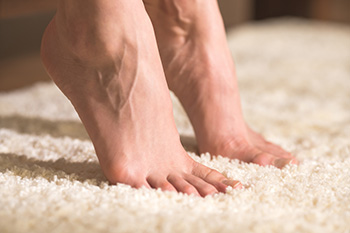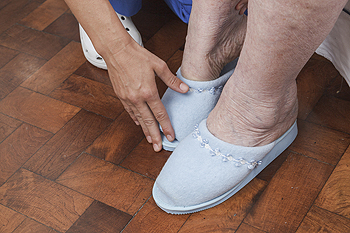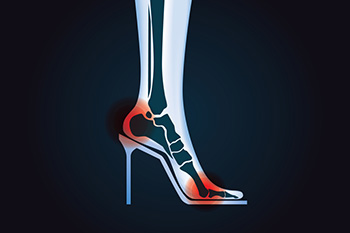Items filtered by date: September 2024
Exercises Can Improve Foot Health

Engaging in regular exercises focused on the toes, feet, and ankles can significantly enhance foot health and alleviate discomfort. These foot exercises, such as stretching the Achilles tendon, rotating the ankles, and performing heel raises, are beneficial in improving flexibility, strength, and balance. They can be particularly helpful for individuals experiencing foot pain or stiffness. Starting slowly and gradually increasing intensity is advisable, especially for those new to exercise. While these exercises can be done at home, it is wise to consult a podiatrist before beginning any new regimen. A podiatrist can provide personalized advice, ensuring that the exercises you choose are safe and effective for your specific foot condition. This foot doctor can also identify underlying issues that may need professional treatment. If you have problems with your feet, it is suggested that you schedule an appointment with a podiatrist.
Exercising your feet regularly with the proper foot wear is a great way to prevent injuries and build strength. If you have any concerns about your feet, contact one of our podiatrists from Podiatry Associates of Victoria. Our doctors can provide the care you need to keep you pain-free and on your feet.
Exercise for Your Feet
Exercise for your feet can help you gain strength, mobility and flexibility in your feet. They say that strengthening your feet can be just as rewarding as strengthening another part of the body. Your feet are very important, and we often forget about them in our daily tasks. But it is because of our feet that are we able to get going and do what we need to. For those of us fortunate enough to not have any foot problems, it is an important gesture to take care of them to ensure good health in the long run.
Some foot health exercises can include ankle pumps, tip-toeing, toe rises, lifting off the floor doing reps and sets, and flexing the toes. It is best to speak with Our doctors to determine an appropriate regimen for your needs. Everyone’s needs and bodies are different, and the activities required to maintain strength in the feet vary from individual to individual.
Once you get into a routine of doing regular exercise, you may notice a difference in your feet and how strong they may become.
If you have any questions please feel free to contact our office located in Victoria, TX . We offer the newest diagnostic and treatment technologies for all your foot and ankle needs.
Common Foot Problems in Older Adults

Elderly people frequently encounter foot problems, such as plantar fasciitis, arthritis, gout, and claw toe. Plantar fasciitis, marked by heel pain and inflammation of the tissue along the bottom of the foot, can be particularly bothersome. Arthritis, including osteoarthritis and rheumatoid arthritis, often leads to joint pain, stiffness, and swelling, impacting overall mobility. Gout, another type of arthritis characterized by sudden, intense pain and swelling, usually affects the big toe due to uric acid crystal buildup. Additionally, claw toe, a condition where toes bend into a claw-like position, can result from muscle imbalances or arthritis. If you are older and are experiencing specific foot conditions, it is suggested that you make an appointment with a podiatrist who can provide you with relief and treatment solutions.
Proper foot care is something many older adults forget to consider. If you have any concerns about your feet and ankles, contact one of our podiatrists from Podiatry Associates of Victoria. Our doctors can provide the care you need to keep you pain-free and on your feet.
The Elderly and Their Feet
As we age we start to notice many changes in our body, but the elder population may not notice them right away. Medical conditions may prevent the elderly to take notice of their foot health right away. Poor vision is a lead contributor to not taking action for the elderly.
Common Conditions
- Neuropathy – can reduce feeling in the feet and can hide many life-threatening medical conditions.
- Reduced flexibility – prevents the ability of proper toenail trimming, and foot cleaning. If left untreated, it may lead to further medical issues.
- Foot sores – amongst the older population can be serious before they are discovered. Some of the problematic conditions they may face are:
- Gouging toenails affecting nearby toe
- Shoes that don’t fit properly
- Pressure sores
- Loss of circulation in legs & feet
- Edema & swelling of feet and ankles
Susceptible Infections
Diabetes and poor circulation can cause general loss of sensitivity over the years, turning a simple cut into a serious issue.
If you have any questions please feel free to contact our office located in Victoria, TX . We offer the newest diagnostic and treatment technologies for all your foot and ankle needs.
The Negative Side Effects of Wearing High Heels

Wearing high heels can lead to several negative side effects affecting the feet. The elevated position of the heel places excessive pressure on the toes and the balls of the feet, often causing pain and discomfort. This pressure can result in conditions such as bunions, hammertoes, and calluses. Additionally, the unnatural foot position associated with high heels disrupts proper foot alignment, leading to potential issues with balance and gait. Over time, wearing high heels can contribute to joint and muscle strain, leading to chronic pain in the feet, knees, and lower back. To minimize these effects, it is important to balance high-heel wear with comfortable, supportive footwear and practice foot care routines that alleviate pressure and promote foot health. If you have developed a foot condition from frequently wearing high heels, it is suggested that you consult a podiatrist who can offer you effective relief strategies.
High heels have a history of causing foot and ankle problems. If you have any concerns about your feet or ankles, contact one of our podiatrists from Podiatry Associates of Victoria. Our doctors can provide the care you need to keep you pain-free and on your feet.
Effects of High Heels on the Feet
High heels are popular shoes among women because of their many styles and societal appeal. Despite this, high heels can still cause many health problems if worn too frequently.
Which Parts of My Body Will Be Affected by High Heels?
- Ankle Joints
- Achilles Tendon – May shorten and stiffen with prolonged wear
- Balls of the Feet
- Knees – Heels cause the knees to bend constantly, creating stress on them
- Back – They decrease the spine’s ability to absorb shock, which may lead to back pain. The vertebrae of the lower back may compress.
What Kinds of Foot Problems Can Develop from Wearing High Heels?
- Corns
- Calluses
- Hammertoe
- Bunions
- Morton’s Neuroma
- Plantar Fasciitis
How Can I Still Wear High Heels and Maintain Foot Health?
If you want to wear high heeled shoes, make sure that you are not wearing them every day, as this will help prevent long term physical problems. Try wearing thicker heels as opposed to stilettos to distribute weight more evenly across the feet. Always make sure you are wearing the proper shoes for the right occasion, such as sneakers for exercising. If you walk to work, try carrying your heels with you and changing into them once you arrive at work. Adding inserts to your heels can help cushion your feet and absorb shock. Full foot inserts or metatarsal pads are available.
If you have any questions please feel free to contact our office located in Victoria, TX . We offer the newest diagnostic and treatment technologies for all your foot and ankle needs.
It's Time for Beautiful Feet
Understanding Lisfranc Fractures

A Lisfranc fracture is a serious injury involving the bones and joints in the midfoot. It specifically affects the Lisfranc joint complex, where the metatarsal bones connect with the bones of the midfoot. This type of fracture often results from a high-impact trauma or a severe twisting injury, such as those occurring in sports injuries or car accidents. Symptoms of a Lisfranc fracture can include intense pain in the midfoot, swelling, bruising, and difficulty bearing weight. The injury can sometimes be mistaken for less severe foot conditions, which underscores the importance of proper diagnosis. Immediate medical attention is vital for effective treatment, which may involve rest, immobilization, or surgical intervention depending on the severity. If you have a broken foot, it is suggested that you consult a podiatrist who can determine the type of fracture and offer treatment methods that are right for you.
A broken foot requires immediate medical attention and treatment. If you need your feet checked, contact one of our podiatrists from Podiatry Associates of Victoria. Our doctors can provide the care you need to keep you pain-free and on your feet.
Broken Foot Causes, Symptoms, and Treatment
A broken foot is caused by one of the bones in the foot typically breaking when bended, crushed, or stretched beyond its natural capabilities. Usually the location of the fracture indicates how the break occurred, whether it was through an object, fall, or any other type of injury.
Common Symptoms of Broken Feet:
- Bruising
- Pain
- Redness
- Swelling
- Blue in color
- Numbness
- Cold
- Misshapen
- Cuts
- Deformities
Those that suspect they have a broken foot shoot seek urgent medical attention where a medical professional could diagnose the severity.
Treatment for broken bones varies depending on the cause, severity and location. Some will require the use of splints, casts or crutches while others could even involve surgery to repair the broken bones. Personal care includes the use of ice and keeping the foot stabilized and elevated.
If you have any questions please feel free to contact our office located in Victoria, TX . We offer the newest diagnostic and treatment technologies for all your foot and ankle needs.

